How to Become a Race Walking Official - Introduction
Watch the Entire Page as a Video
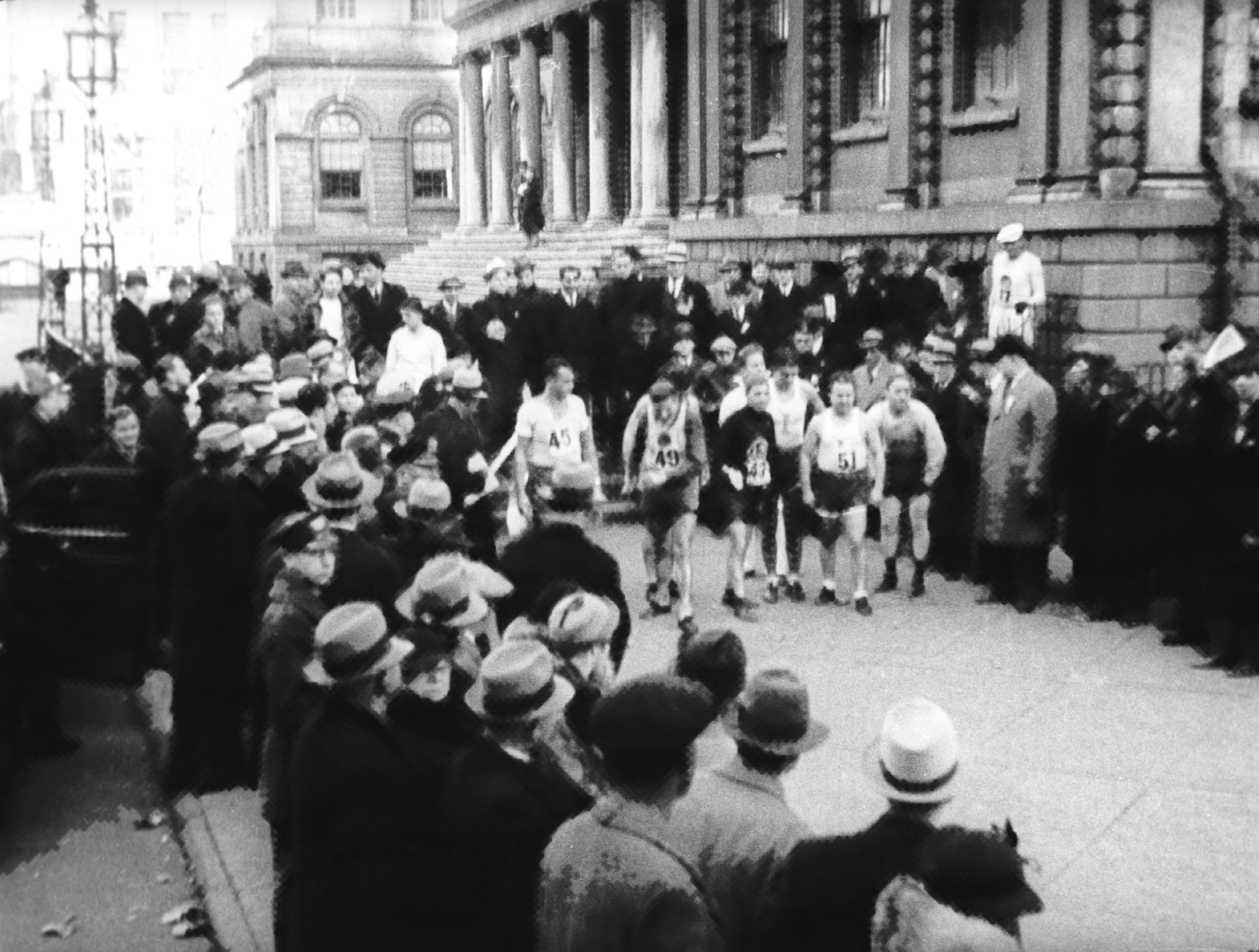
Race Walking has been an Olympic Event since the early 1900’s and have been contested in various formats over the years. This photo is from a 10 mile race walk on the streets of New York, beginning at City Hall and finishing ten miles later at the Coney Island boardwalk.
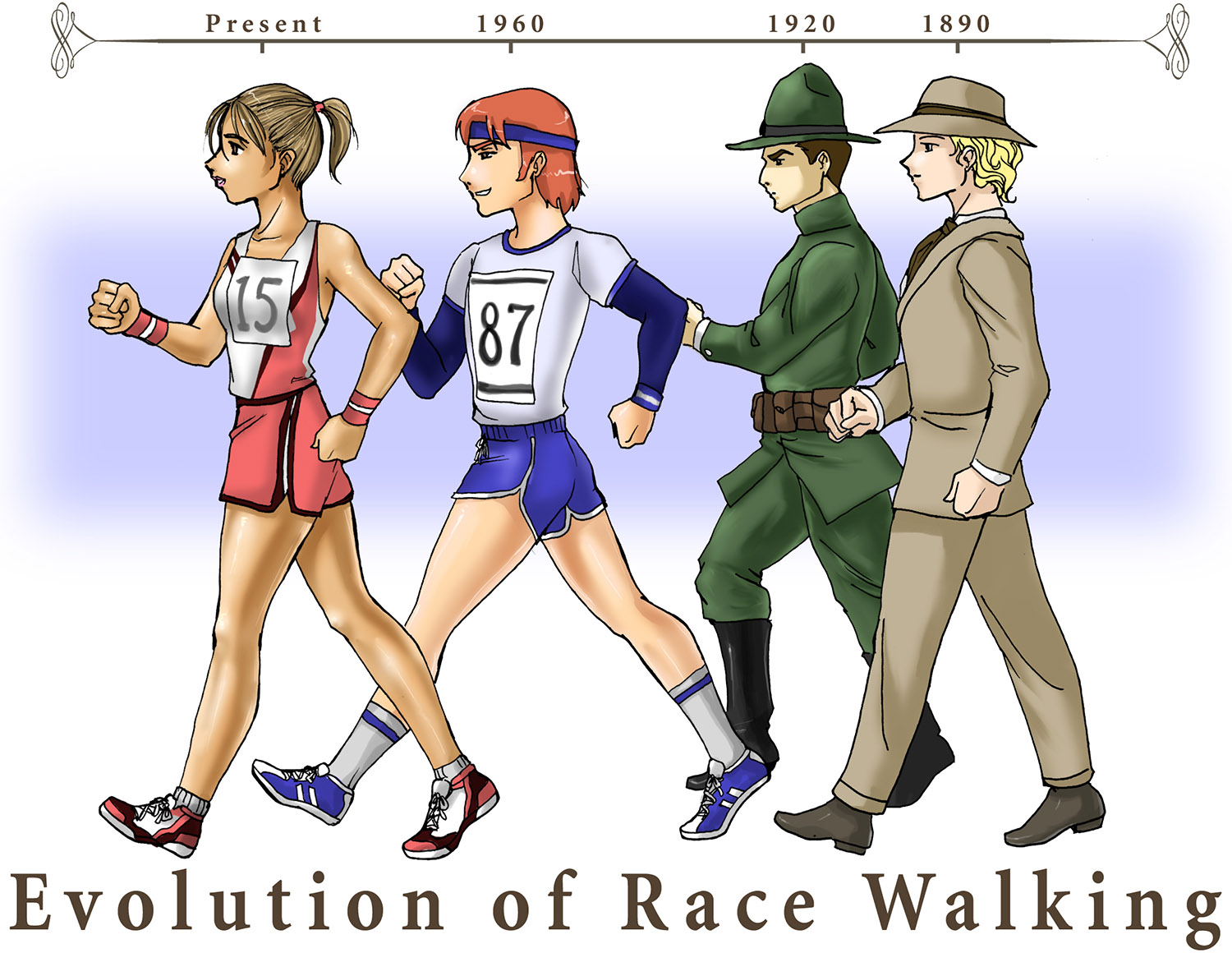
The definition of race walking has changed over the years, but no matter how, it has always sought to be differentiate walking from running. Just as race walking technique has evolved, and walkers have become faster, the definition has also evolved. It now differentiates race walking from normal walking. The role of judges and the tools used by judges, as reflected by the rules, differ much today from that of the past. Few of the best competitors from 100, even 50 years ago, would be competitive with today’s best and would find the conduct of race walk events quite different from that which they knew then. Long walks around Olympic cities are now contested over small circuits of one or two kilometers. Judges are now equipped paddles and paperwork to record their actions. Recorders and posting boards keep all abreast of infractions. Loss of contact which was the only part of the original definition seems to have now become more permissive with the caveat of “visible loss of contact as seen by the human eye,” while knee flection at first not in the definition was added and has now become more strict. So, how are today’s race walkers judged?
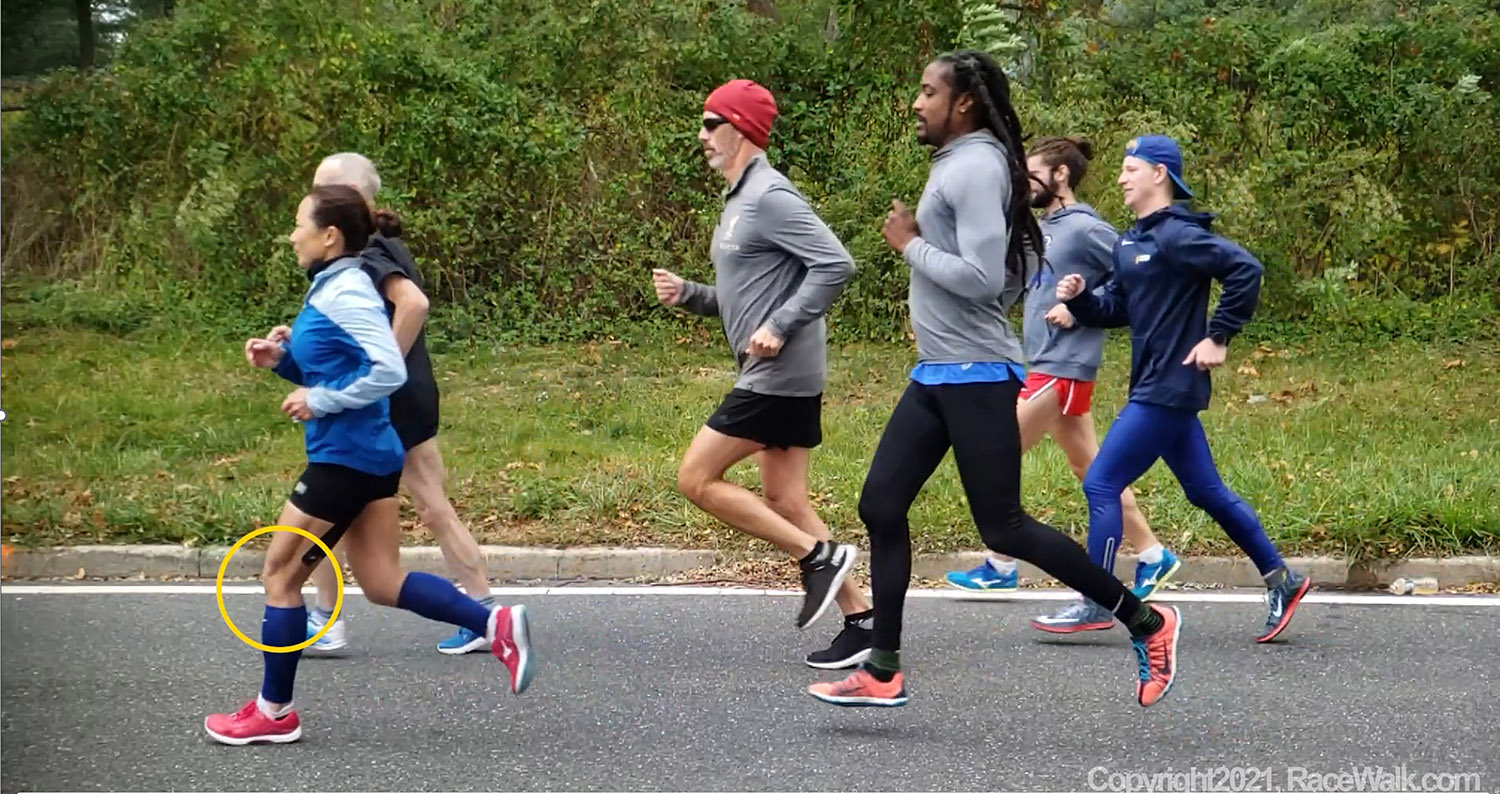
Let’s start with a group of runners. With runners, you can see an obvious flight phase where both feet are off the ground at the same time and when the lead foot strikes the ground its leg flexes at the knee and remains flexed.
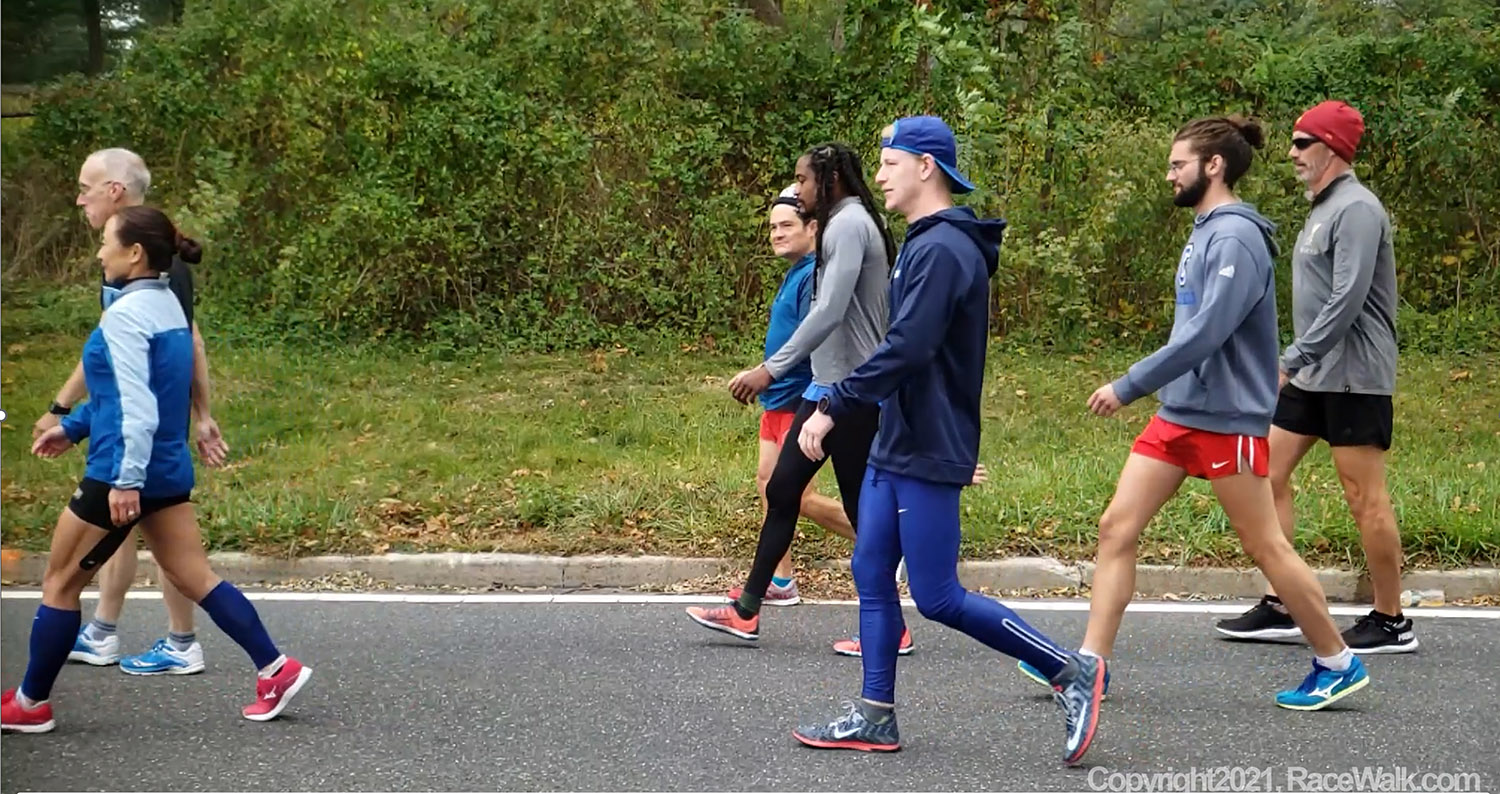
When we look at a group of pedestrians walking normally, notice they do not adhere to the rules of race walking. Yes, we see them maintaining contact as they walk. This means, before the trail foot leaves the ground, the lead foot makes contact. However, with each stride, the knee flexes when the foot is in contact with the ground. So, we can see here, normal walkers adhere to the first clause of the definition, but violate the second. A hiking stride further exaggerates the knee flexion of normal walking.
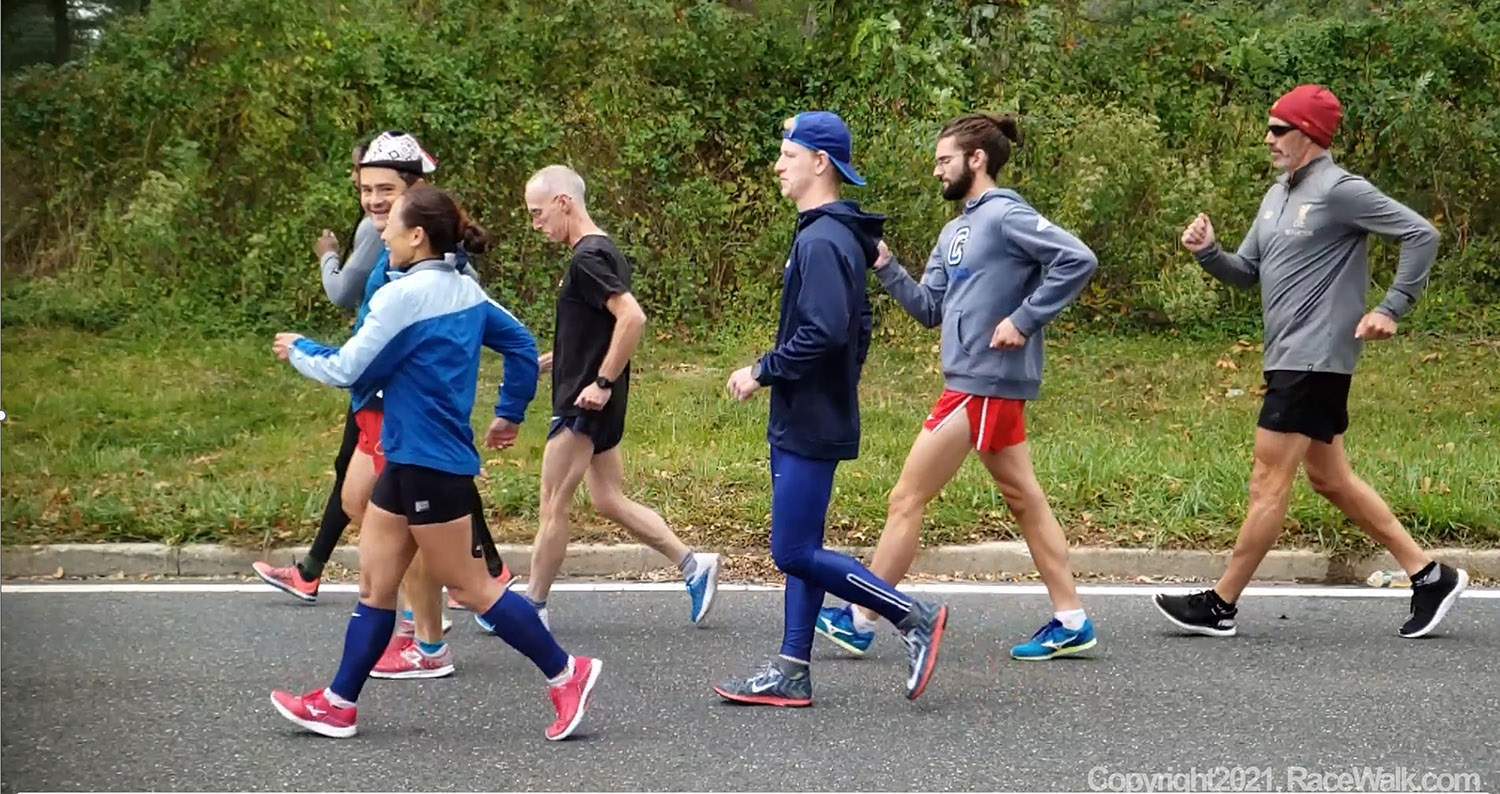
It's far easier to judge slow race walkers. It is easier to see that these walkers are race walking within the definition. Because they are walking slowly, they have one foot on the ground at all times and when they place their lead leg on the ground, it fully extends and does not bend at the knee.
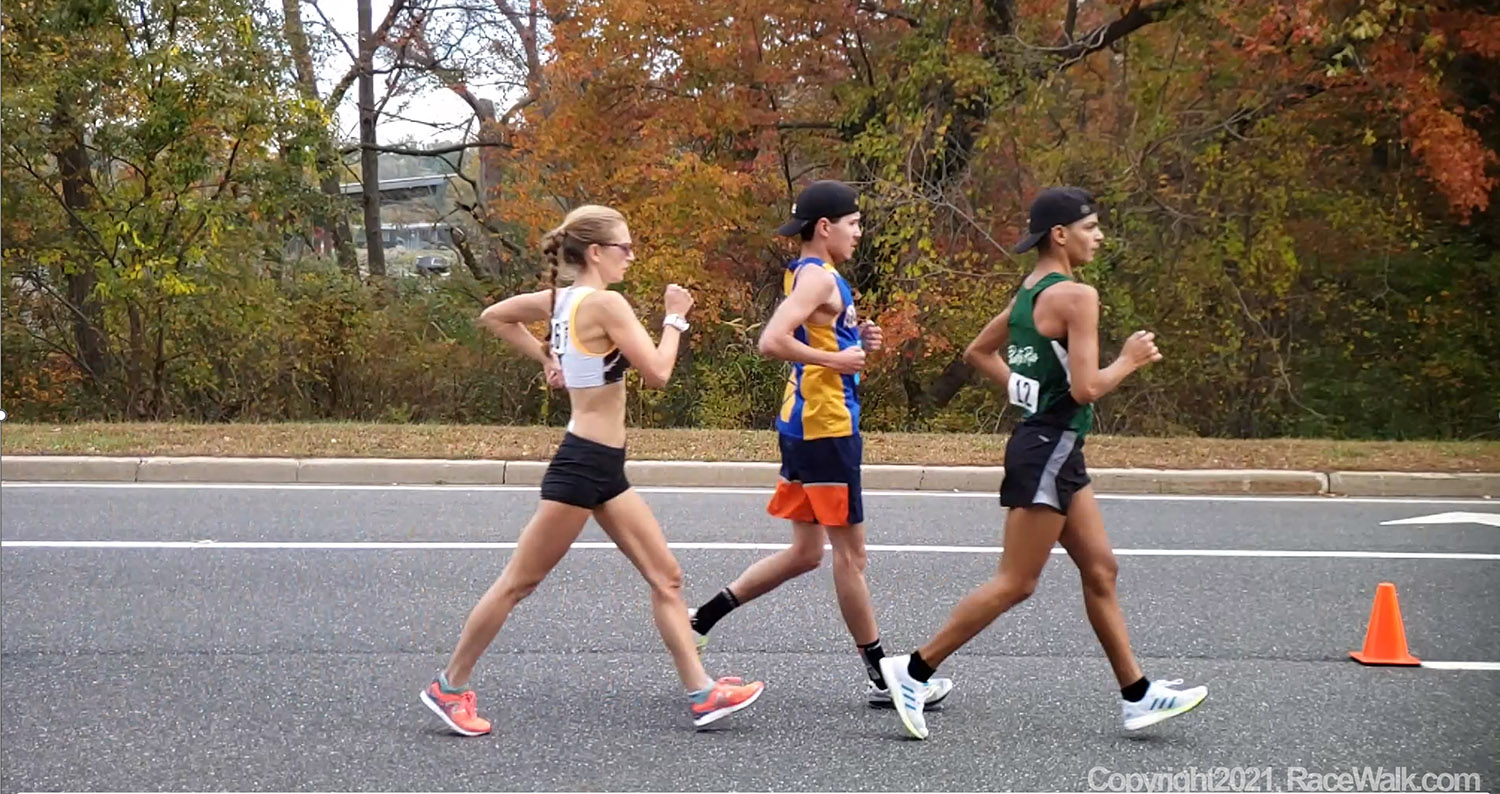
Now, let's look at a group of faster race walkers. Realize that at full speed it is very hard to judge from video. However, in slow motion and by freezing frames, we are able to see that at one point, both feet are off the ground. This is acceptable in legal race walking. You may look at that and say ”Oh my G-d, they're really off the ground!” Be assured, we have plenty of footage of people significantly more off the ground. The question is, do you see visible loss of contact when you're looking at them when they're moving at full speed? Do you see if the trail foot is high, or the shoulders and head are bobbing? Both do not matter when you are deciding to make a loss of contact call. Excessive body motion is an indication that you need to look at the walker closer. Remember, the only way to judge loss of contact is to see visible loss of contact in the feet. In this case, even in slow motion, it's hard to see walkers off the ground.
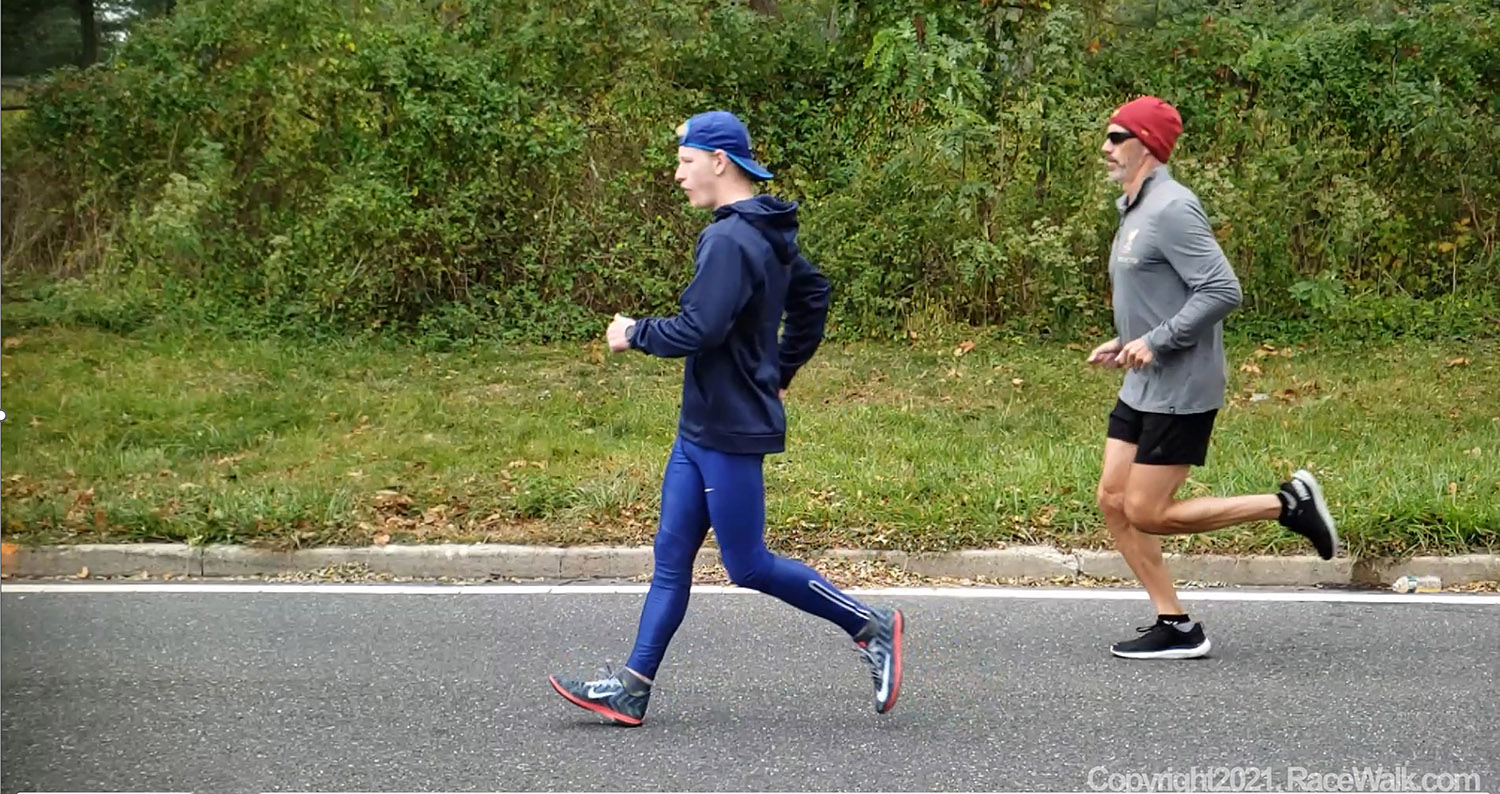
Now, let's just compare of a single runner and a single race walker. Hopefully, you can tell the difference between the two. The first is race walking. They're fully extending their leg and they're keeping it extended or straightened through the stride, past vertical. The second, our friend Alan James is demonstrating running where he is off the ground and flexing the knee. Let's play it one more time, so you can look at nice, legal race walking technique and you can see the walker is just a hair off the ground. You cannot pick that up with the human eye. We'll go into exactly when a judge should be able to see loss of contact later. We assure you that this example is not visible to the human eye at full speed.
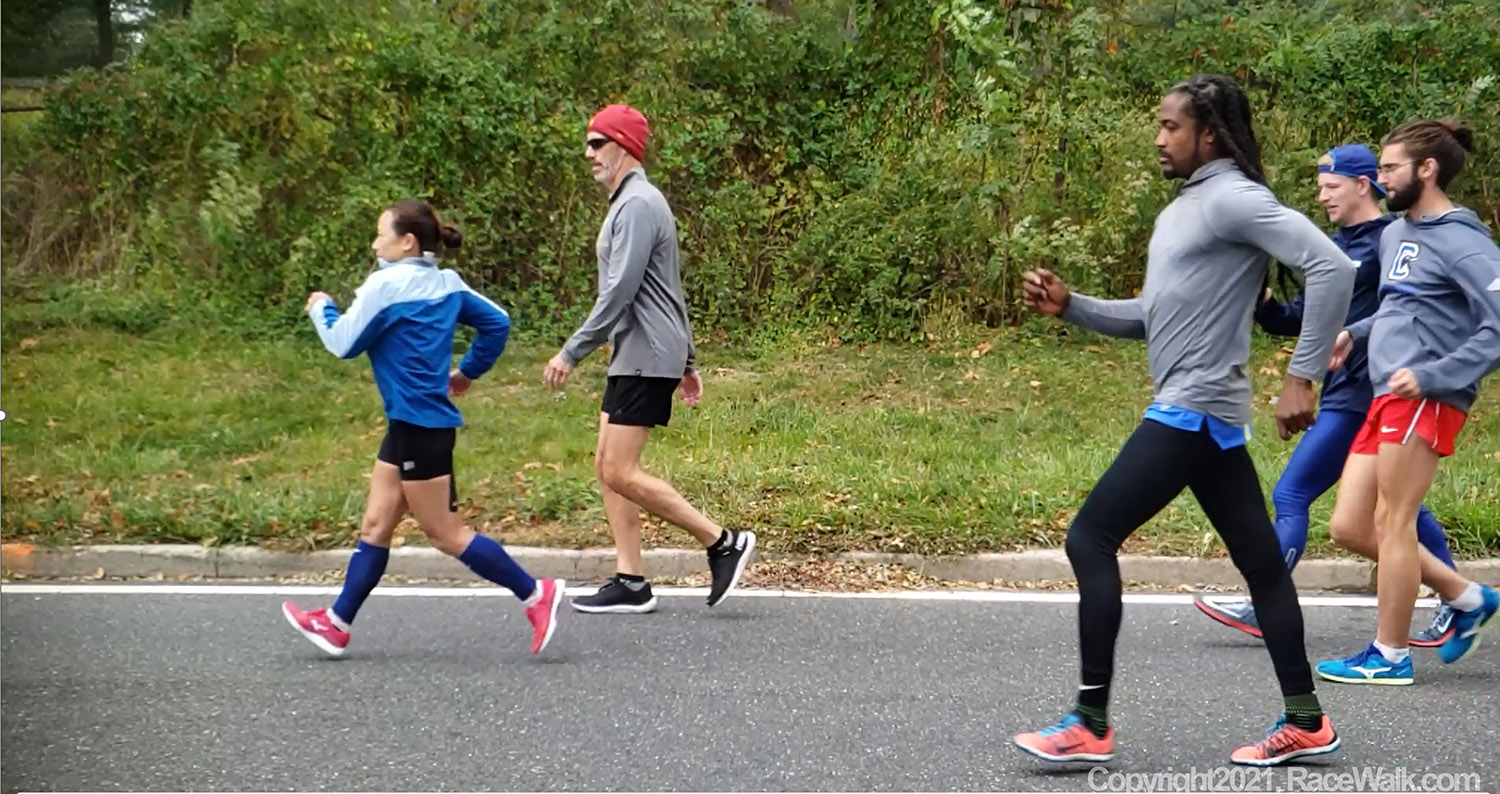
Now, we'll look at a single pedestrian and many race walkers in the same clip. You should be able to pick out who the pedestrian is. If you judged correctly, the pedestrian is the walker that lands with the bent knee and it stays bent through the stride. The other men and women are walking with fully extended, straightened knees.
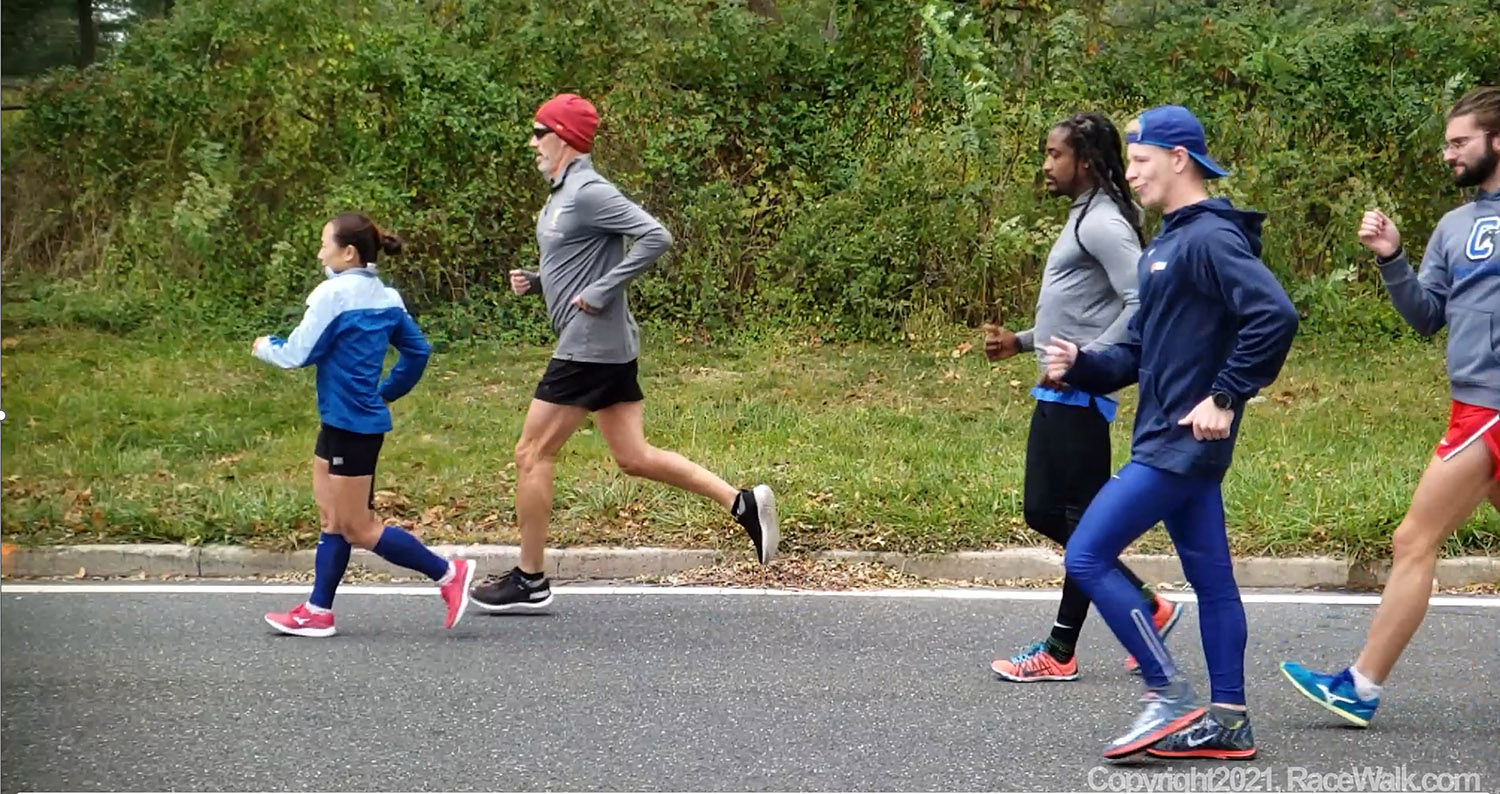
Next, we look at a single runner and many race walkers. You can see visible loss of contact and you can see that the runner’s knees are bent. He stands out, very different from everyone else in the image.
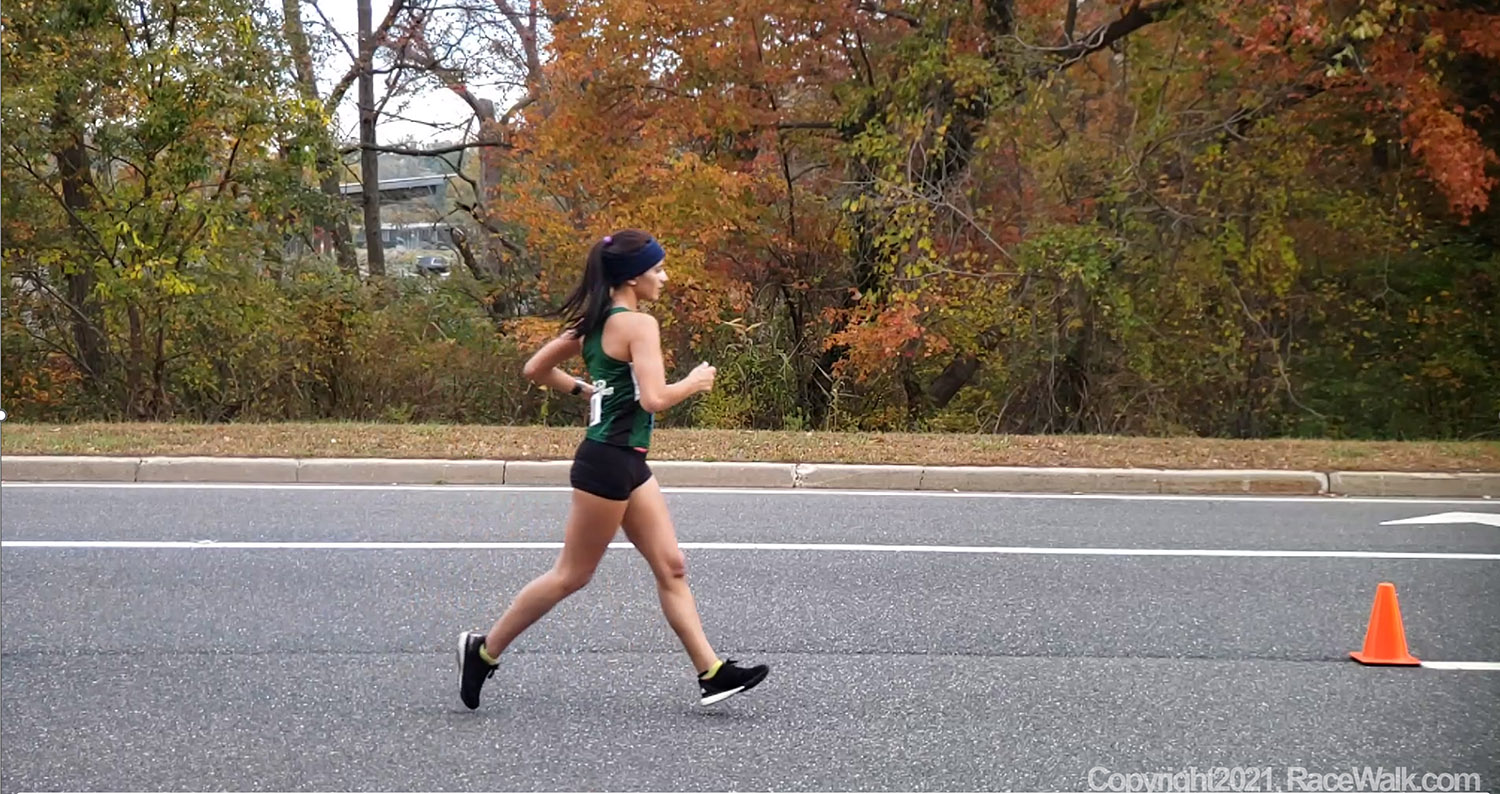
Next, let's just look at a single race walker. Because it's in slow-motion, you might be able to see that there's visible loss of contact. At full speed you would not.
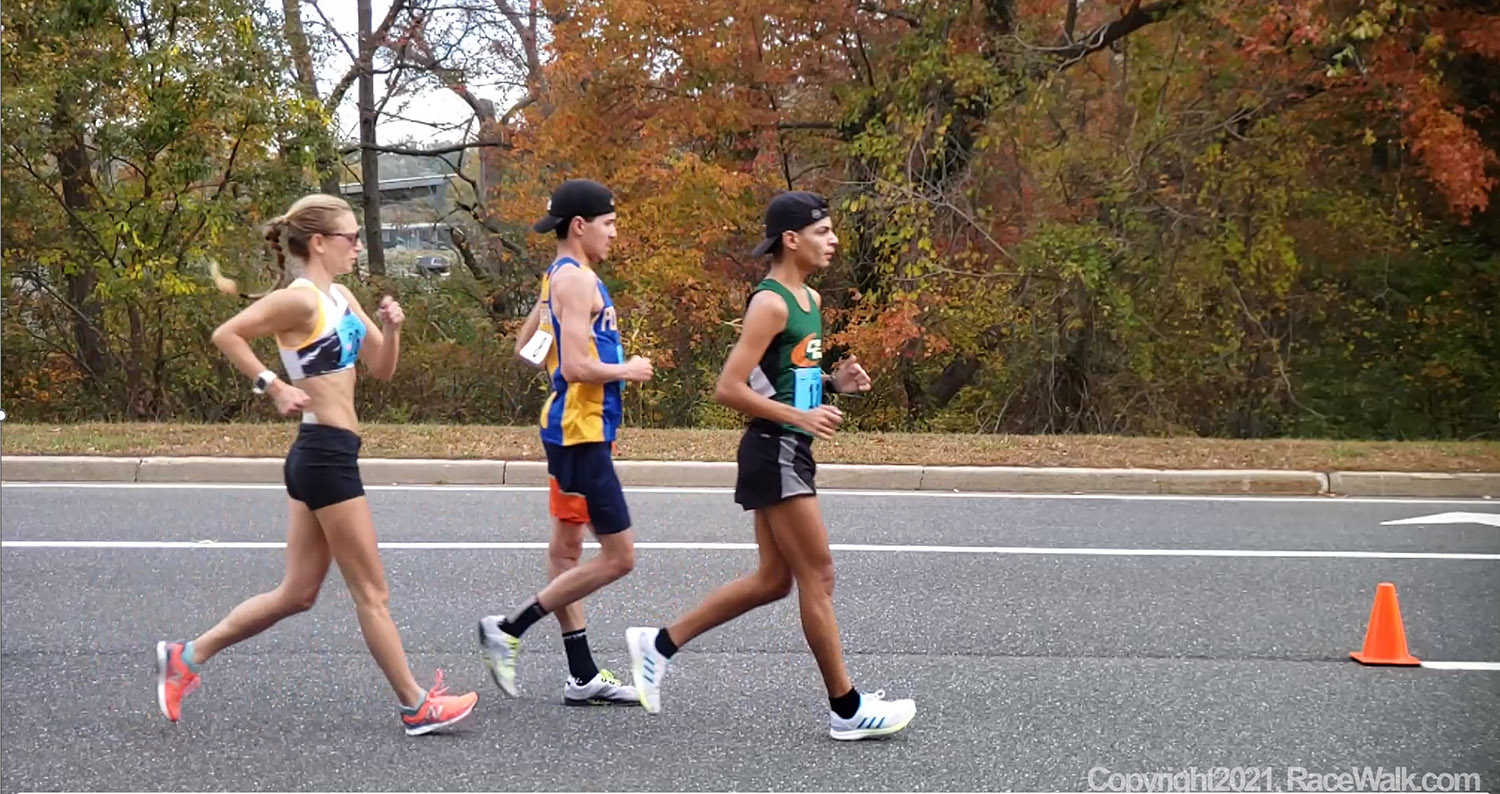
Now we'll look at another group of race walkers with Maria Michta-Coffey, a two-time Olympian. Can you judge her for loss of contact at full speed? It’s very difficult isn’t it. If you are not sure, you do nothing as a judge.
Next Lesson: Definition of Race Walking - Yellow Paddles / Red Cards